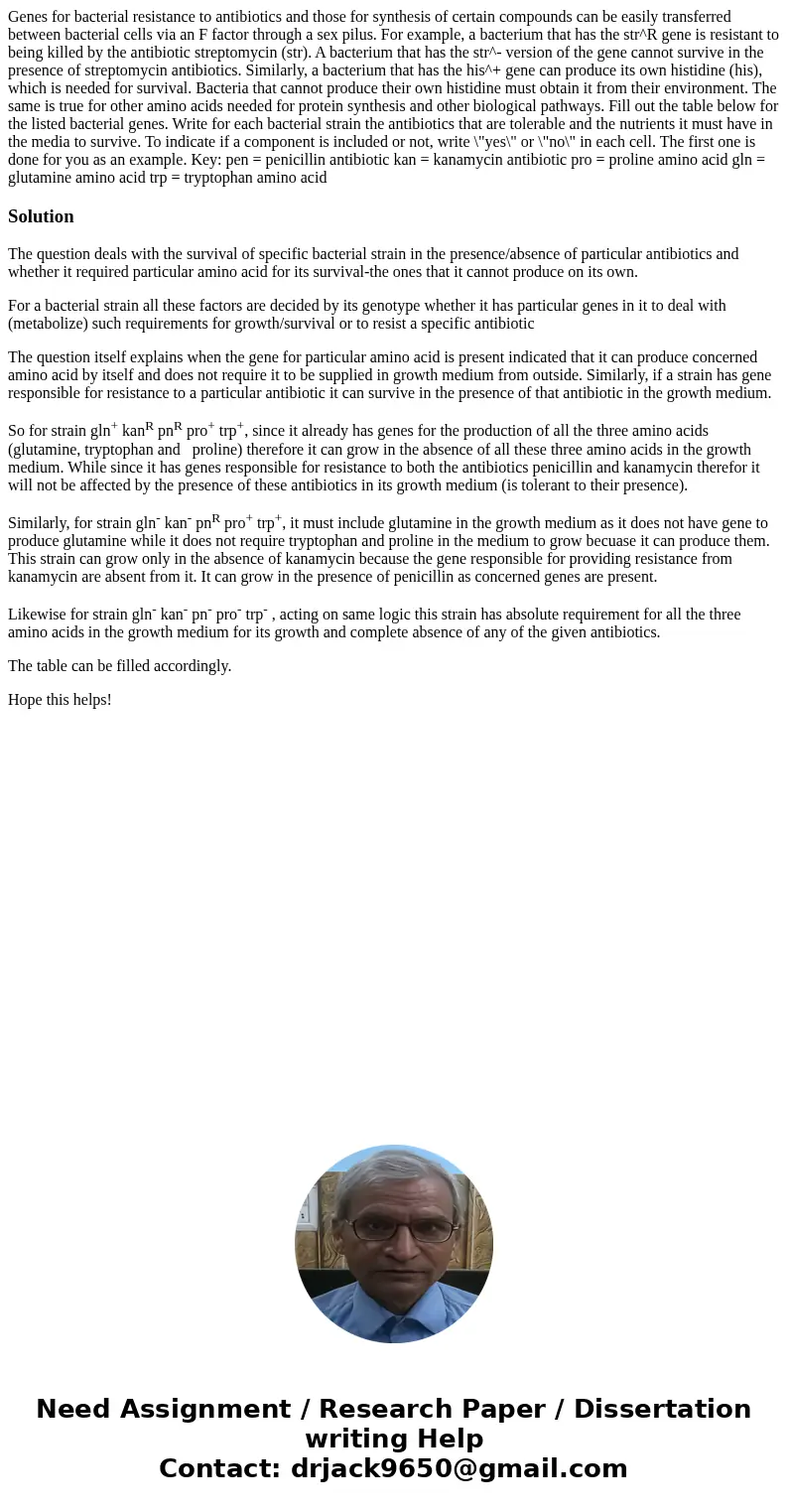Genes for bacterial resistance to antibiotics and those for
Solution
The question deals with the survival of specific bacterial strain in the presence/absence of particular antibiotics and whether it required particular amino acid for its survival-the ones that it cannot produce on its own.
For a bacterial strain all these factors are decided by its genotype whether it has particular genes in it to deal with (metabolize) such requirements for growth/survival or to resist a specific antibiotic
The question itself explains when the gene for particular amino acid is present indicated that it can produce concerned amino acid by itself and does not require it to be supplied in growth medium from outside. Similarly, if a strain has gene responsible for resistance to a particular antibiotic it can survive in the presence of that antibiotic in the growth medium.
So for strain gln+ kanR pnR pro+ trp+, since it already has genes for the production of all the three amino acids (glutamine, tryptophan and proline) therefore it can grow in the absence of all these three amino acids in the growth medium. While since it has genes responsible for resistance to both the antibiotics penicillin and kanamycin therefor it will not be affected by the presence of these antibiotics in its growth medium (is tolerant to their presence).
Similarly, for strain gln- kan- pnR pro+ trp+, it must include glutamine in the growth medium as it does not have gene to produce glutamine while it does not require tryptophan and proline in the medium to grow becuase it can produce them. This strain can grow only in the absence of kanamycin because the gene responsible for providing resistance from kanamycin are absent from it. It can grow in the presence of penicillin as concerned genes are present.
Likewise for strain gln- kan- pn- pro- trp- , acting on same logic this strain has absolute requirement for all the three amino acids in the growth medium for its growth and complete absence of any of the given antibiotics.
The table can be filled accordingly.
Hope this helps!

 Homework Sourse
Homework Sourse